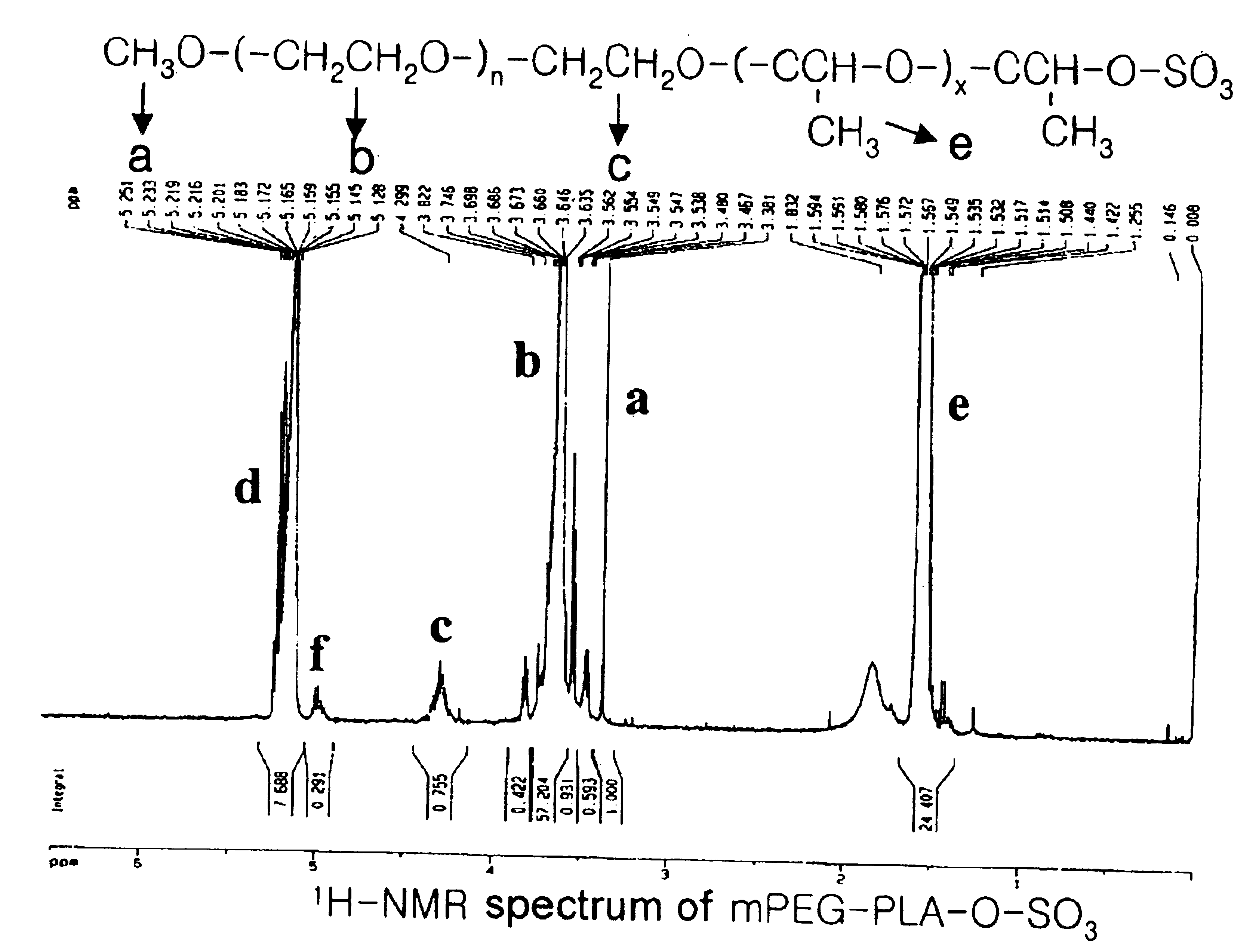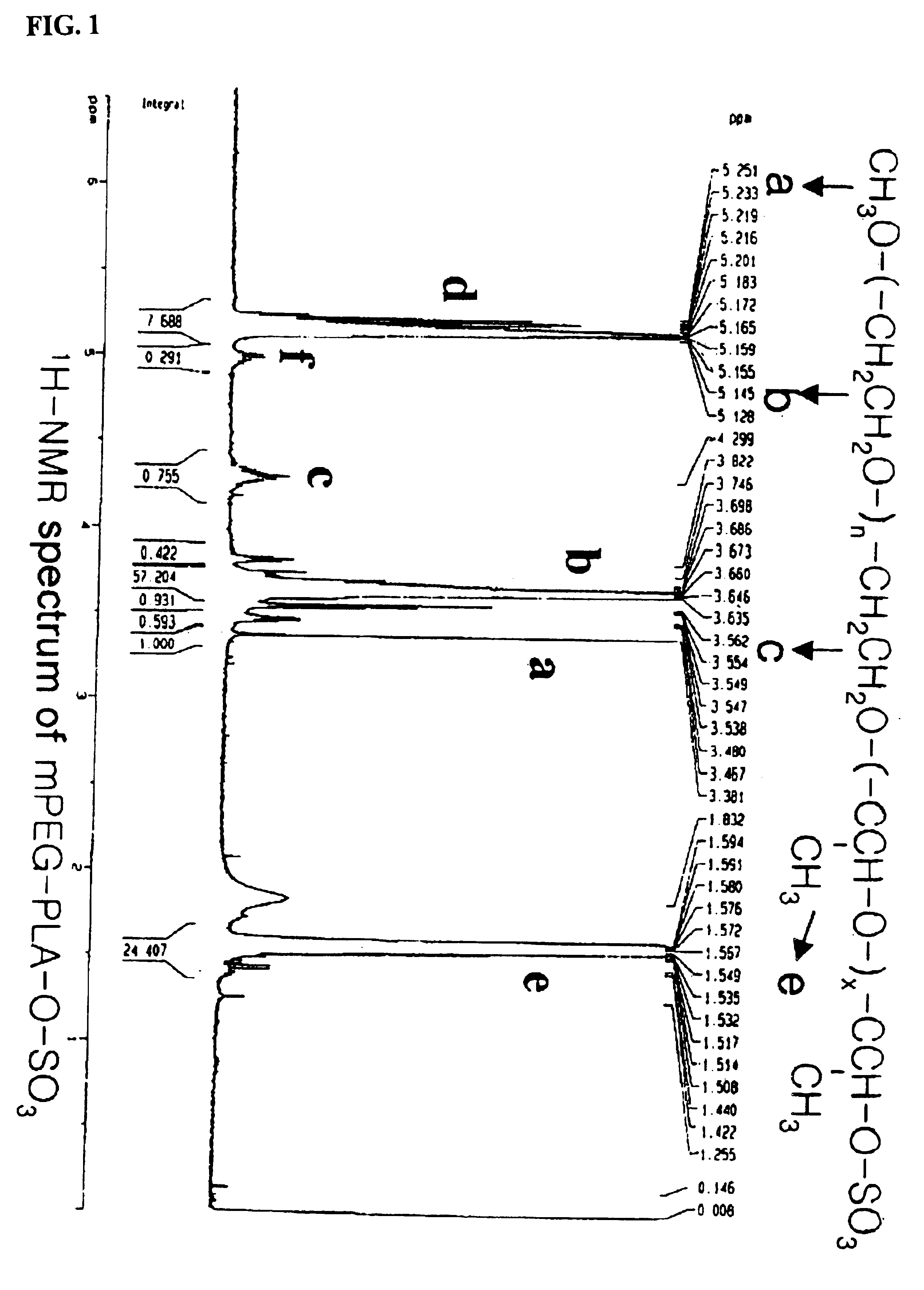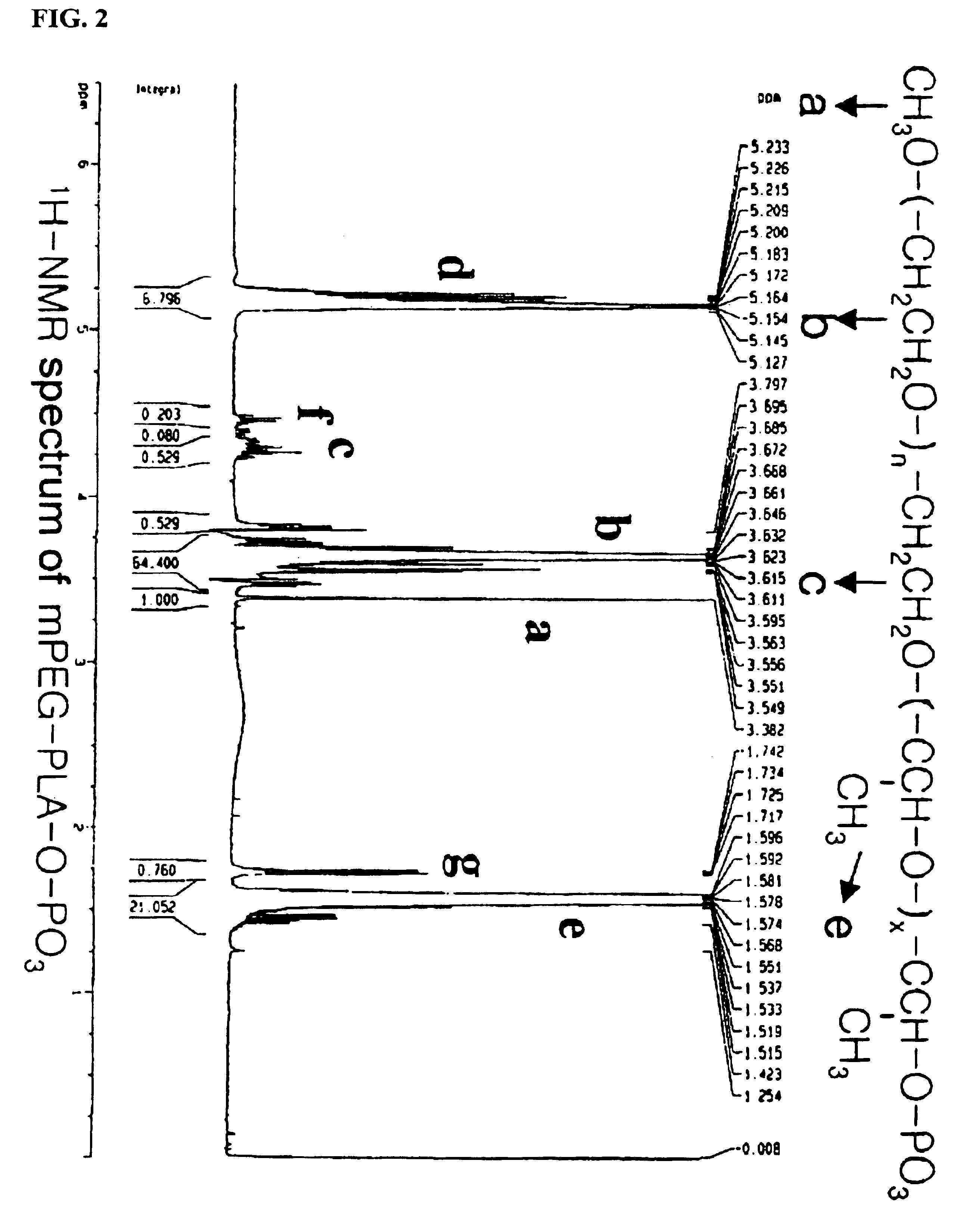Negatively charged amphiphilic block copolymer as drug carrier
a technology of amphiphilic block and drug carrier, which is applied in the direction of microcapsules, capsule delivery, nanostructure manufacturing, etc., can solve the problems of low affinity for water-soluble drugs, difficult to incorporate a large amount of water-soluble hydrophilic drugs the inability to incorporate water-soluble hydrophilic drugs at all into the polymer matrix, etc., to improve the stability of drugs, improve blood concentration, and improve drug stability
- Summary
- Abstract
- Description
- Claims
- Application Information
AI Technical Summary
Benefits of technology
Problems solved by technology
Method used
Image
Examples
examples
[0078]The following preparations illustrate synthesis of type A-B block copolymers consisting of a hydrophilic polymer segment (A) and a hydrophobic polymer segment(B).
preparation 1
Synthesis of Monomethoxypolyethyleneglycol-polylactide(mPEG-PLA) Block Copolymers
[0079]5.0 g of monomethoxypolyethyleneglycol(Molecular weight: 2,000 Daltons) was introduced into a two-neck, 100 ml round-bottomed flask, and heated to 100° C. for 2-3 hours under reduced pressure(1 mmHg) to remove the moisture. The inside of the reaction flask was filled with dry nitrogen and then the catalyst, stannous octoate (Sn(Oct)2) dissolved in toluene, was added in an amount of 1.0 mol %(10.13 mg, 0.025 mmole) with respect to the monomethoxypolyethyleneglycol. After stirring for 30 minutes, the mixture was heated to 110° C. for 1 hour under reduced pressure(1 mmHg) to evaporate the toluene which was used to dissolve the catalyst. 5 g of purified lactide was added thereto and the resulting mixture was heated to 130° C. for 12 hours. The block copolymer thus produced was dissolved in ethanol and then added to diethylether to precipitate the block copolymer. The block copolymer thus obtained was ...
preparation 2
Synthesis of Monomethoxypolyethyleneglycol-poly(lactic-co-glycolide)(mPEG-PLGA) Block Copolymers
[0080]5.0 g of monomethoxypolyethyleneglycol(Molecular weight: 5,000 Daltons) was reacted with 3.72 g of lactide and 1.28 g of glycolide in the presence of stannous octoate at 120° C. for 12 hours according to the same manner as in Preparation 1, to give the title block copolymer. The molecular weight of the resulting block copolymer (mPEG-PLGA) was measured as 5,000-4,500 Daltons.
PUM
| Property | Measurement | Unit |
|---|---|---|
| number average molecular weights | aaaaa | aaaaa |
| molecular weight | aaaaa | aaaaa |
| molecular weight | aaaaa | aaaaa |
Abstract
Description
Claims
Application Information
 Login to View More
Login to View More - R&D
- Intellectual Property
- Life Sciences
- Materials
- Tech Scout
- Unparalleled Data Quality
- Higher Quality Content
- 60% Fewer Hallucinations
Browse by: Latest US Patents, China's latest patents, Technical Efficacy Thesaurus, Application Domain, Technology Topic, Popular Technical Reports.
© 2025 PatSnap. All rights reserved.Legal|Privacy policy|Modern Slavery Act Transparency Statement|Sitemap|About US| Contact US: help@patsnap.com



